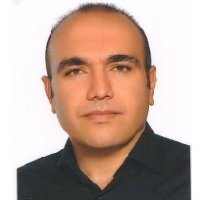Application of intelligent algorithm to model head-discharge relationship for submerged labyrinth and linear weirs
Weirs are hydraulic structures with a various application as flow measurement, flow diverting, and/or flow control. Weirs are designed under free-flow conditions meaning tailwater is lower than weir crest, in this state, flow passing the weir is governed by the weir geometry and the approach flow condition. When the tail-water exceeds the crest elevation, the weir is submerged. Under submerged conditions for a certain discharge, a higher upstream head is required to pass the flow relative to the free flow state. Therefore, the submerged head-discharge relationship is different from free condition one. According to the literature, there are three main methods to extract the relationship between dependent and independent variables: experimental methods, classic regression equations, and intelligent algorithms. The previous researches showed that more studies have been performed experimentally to predict the head-discharge relationship for linear and labyrinth weirs while using artificial intelligence has been proved to include more accuracy to adapt complex hidden relationships among dependent and independent variables. In this paper, two intelligent algorithms namely SVM and GEP have been applied to extract the relationship between a submerged head-discharge function for linear and labyrinth weirs. The results of these two mentioned algorithms were compared with experimental and regression modeling.
To simulate H^*/H_o using SVM and GEP, two scenarios were defined. At the first scenario, the amount of H^*/H_o for labyrinth submerged weir was modeled using five dimensionless parameters as Fr1, Cd, H_d/H_o , H_o/P, and α. For the SVM algorithm, the Nu-class classification method with Redial Basis Function as kernel function were selected using setting parameters as γ and Nu. GEP was applied as another algorithm to model H^*/H_o for the labyrinth weir. In the second scenario, SVM and GEP were applied to predict H^*/H_o for the linear submerged weir. To compare the performance assessment of an intelligent algorithm, two types of equations were obtained using classic regression models. The first one was the extracted relationship of Tullis et al. (2007) and the second one was the SPSS regression equation. All simulations were compared with four assessment criteria as root mean square error (RMSE), determination coefficient (R2), relative error (RE), and standardized developed discrepancy ratio (ZDDR). Sensitivity analysis was the last step of the H^*/H_o prediction.
Training and testing phases of SVM and GEP were assessed using the above four mentioned assessment criteria. The included dimensionless parameter for the submerged labyrinth weir to predict H^*/H_o were Fr1, Cd, H_d/H_o , H_o/P, and α whereas for the second scenario only Fr1 and H_d/H_o were opted as the effective parameters. The amount of RMSE, R2, RE and ZDDR for SVM at the first scenario during training and testing phases were calculated as (0.0081, 0.9999, 3.34, 66.496) and (0.0104, 0.9996, 1.741, 45.267) respectively. Those of GEP were obtained as (0.2225, 0.9986, 4.42, 23.48) and (0.0157, 0.9992, 0.533, 19.73) respectively. According to these values, SVM was selected as the superior model than to GEP. A comparison was done between SVM and other regression simulations. The values of mentioned assessment criteria for Tullis et al.’s relationship and SPSS extracted equation were computed as (0.02855, 0.9990, 1.756, 19.115) and (0.0307, 0.9990, 8.503, 20.875) respectively. Therefore, among all the used predicting the head-discharge relationship of labyrinth submerged weir, the SVM model was selected as the best model. Sensitivity analysis was performed to determine which parameter has the most effect on the head-discharge relationship. This procedure was done with dropping each of five included parameters and computing four mentioned assessment criteria. According to the calculation, the most significant parameter based on the most decrease of SVM accuracy was Fr1. In the second scenario, a similar calculation was done on the linear submerged weir. The best performance was accrued for the SVM algorithm for training and testing phases. The corresponding accuracy indices values during testing phase for SVM and GEP were (0.0066, 0.9996, 0.320, 67.91) and (0.0088, 0.9998, 0.5432, 63.73) respectively. The priority of SVM performance than to the classic regression equations namely Tullis et al.’s (2007) relationship and SPSS equation were proved with the accuracy indices. The amount of assessment criteria values for two above mentioned models were (0.0118, 0.9997, 0.653, 60.69) and (0.0507, 0.9965, 3.444, 8.76) respectively. According to the sensitivity analysis, the most effective parameters with the most impact was H_d/H_o for the linear submerged weir.
The results showed that intelligent algorithms have the most performance than to the other classic and experimental relationships to extract the head-discharge relationship for the submerged labyrinth and linear weirs. Of two SVM and GEP models, the first one was the top model for the labyrinth and linear weirs head-discharge relationship prediction. It’s recommended to use an intelligent algorithm to predict and extract the complicated and hidden relationship among dependent and independents variables.
- حق عضویت دریافتی صرف حمایت از نشریات عضو و نگهداری، تکمیل و توسعه مگیران میشود.
- پرداخت حق اشتراک و دانلود مقالات اجازه بازنشر آن در سایر رسانههای چاپی و دیجیتال را به کاربر نمیدهد.



